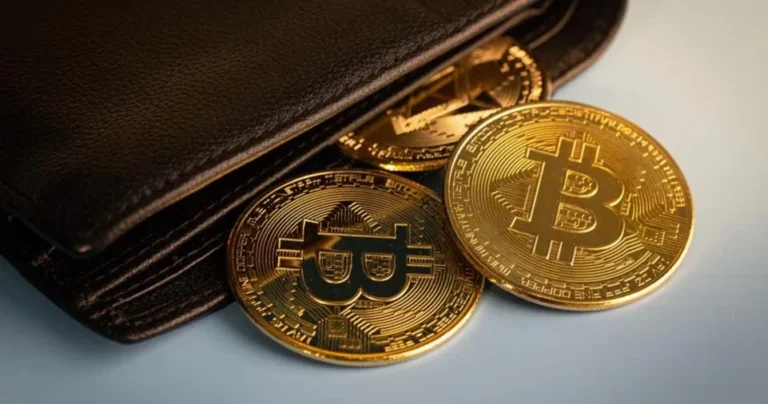As cryptocurrency adoption grows, so does the importance of securing your digital assets. Unlike traditional banking systems, cryptocurrencies offer users full control over their funds. But with great power comes great responsibility.
A compromised wallet can lead to irreversible losses. In this comprehensive guide, we’ll explore how to create a secure crypto wallet, examine different wallet types, and share best practices to keep your digital assets safe.
What is a Crypto Wallet?
A crypto wallet is a digital tool that allows you to store and manage your cryptocurrency. Wallets do not actually store coins; they store private keys, which grant access to your crypto on the blockchain. Losing these keys is equivalent to losing your crypto.
Types of Crypto Wallets

There are several types of wallets, each with its own pros and cons:
- Hardware Wallets: Physical devices that store private keys offline (e.g., Ledger, Trezor).
- Software Wallets: Apps or programs for computers and smartphones (e.g., Electrum, Exodus).
- Web Wallets: Hosted in the cloud and accessed via a browser (e.g., MetaMask, Blockchain.info).
- Paper Wallets: Physical printouts of private keys or QR codes.
- Mobile Wallets: Apps specifically designed for mobile use.
| Wallet Type | Security Level | Accessibility | Recommended For |
|---|---|---|---|
| Hardware | Very High | Low | Long-term storage |
| Software | Moderate | High | Regular transactions |
| Web | Low to Moderate | Very High | Beginners |
| Paper | High (if stored properly) | Very Low | Offline cold storage |
| Mobile | Moderate | Very High | Everyday use |
Choosing the Right Wallet
Choosing the right wallet depends on your needs:
- Are you holding long-term or trading frequently?
- Do you need mobility or maximum security?
- Are you tech-savvy or a beginner?
For beginners, mobile or web wallets with user-friendly interfaces may be best. For large holdings, hardware or cold storage options are recommended.
Setting Up Your Wallet Securely
- Download from Official Sources: Only use links from the official website or verified app stores.
- Verify Downloads: Check hashes or digital signatures where available.
- Use Strong Passwords: Combine upper and lowercase letters, numbers, and symbols.
- Enable Two-Factor Authentication (2FA): Adds a second layer of security.
- Secure Device: Keep your phone or PC malware-free and updated.
Backup and Recovery
Most wallets provide a seed phrase (usually 12-24 words) that can restore your wallet.
- Write it Down: Never store it digitally unless encrypted.
- Store in Multiple Locations: Use safe deposit boxes or trusted family members.
- Test Recovery: Use a test wallet to confirm the seed phrase works.
Hardware vs. Software Wallets
| Wallet Type | Security Level | Accessibility | Recommended For |
| Hardware | Very High | Low | Long-term storage |
| Software | Moderate | High | Regular transactions |
| Web | Low to Moderate | Very High | Beginners |
| Paper | High (if stored properly) | Very Low | Offline cold storage |
| Mobile | Moderate | Very High | Everyday use |
Mobile Wallet Security Tips
- Lock Your Device: Use biometrics and PIN codes.
- Avoid Public Wi-Fi: Use VPNs if necessary.
- Disable Auto-Backup: Prevent seed phrase from being backed up to the cloud.
- Use Wallets with Biometric Lock: Adds extra protection.
Multi-Signature Wallets

A multi-signature (multi-sig) wallet requires multiple private keys to authorize a transaction.
- Ideal for Joint Accounts
- Reduces Risk of Single Key Compromise
- Used by Businesses and DAOs
Cold Storage Solutions
Cold storage keeps your private keys completely offline.
- Paper Wallets: Print and store in a safe.
- Air-Gapped Devices: Wallets installed on devices that never connect to the internet.
- Hardware Wallets in Safe Locations: Combine physical and cryptographic security.
Common Mistakes to Avoid
- Storing Seed Phrases Digitally Without Encryption
- Using Unofficial Wallet Software
- Ignoring Software Updates
- Falling for Phishing Scams
- Not Diversifying Wallets: Don’t keep all your funds in one place.
Tools and Services to Enhance Security
- Passphrase Add-Ons: Add an extra word to your seed phrase.
- Password Managers: Store complex passwords safely.
- VPNs and Firewalls: Protect network communications.
- Anti-Virus Software: Detect and remove malware.
- Hardware Security Modules (HSMs): Used by enterprises to manage cryptographic keys.
ALSO READ: How to Create a Business Plan for a Blockchain Startup?
Conclusion
Creating a secure crypto wallet isn’t just about choosing the right app or device—it’s about building secure habits. From selecting the right wallet type to maintaining strict backup protocols and staying informed about threats, your digital safety hinges on proactive and informed decisions. Crypto empowers you with financial independence, but that comes with a duty to safeguard your assets.











